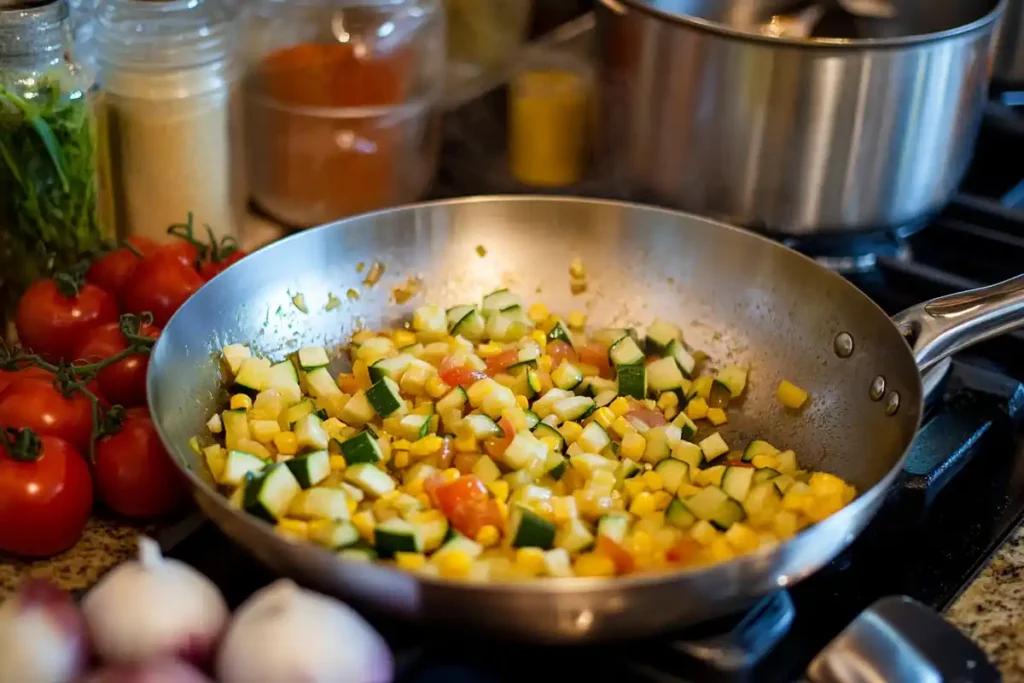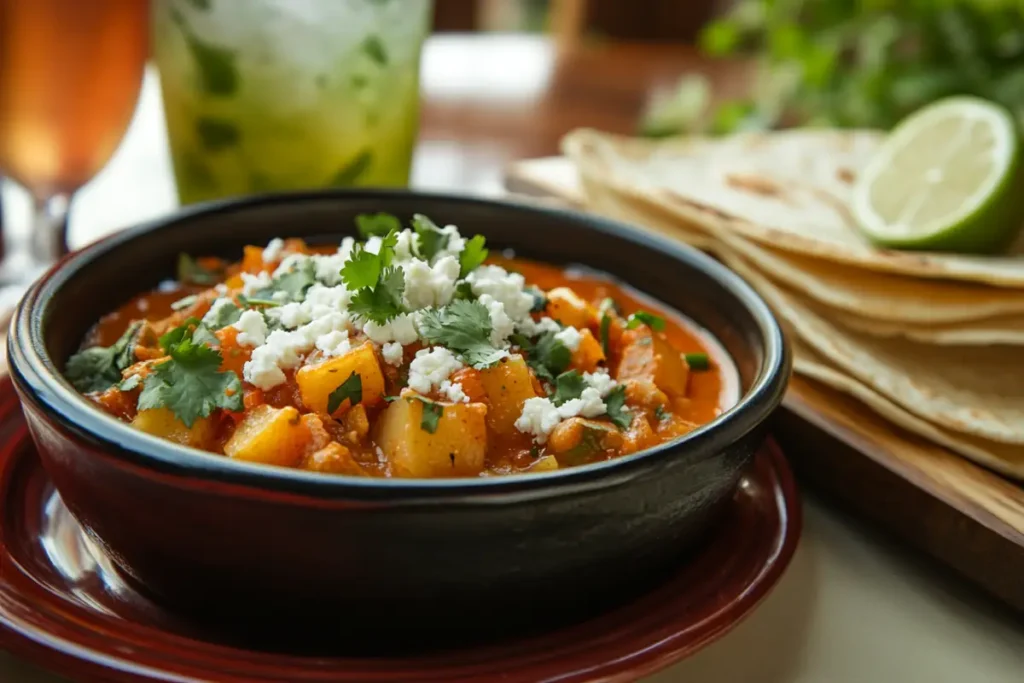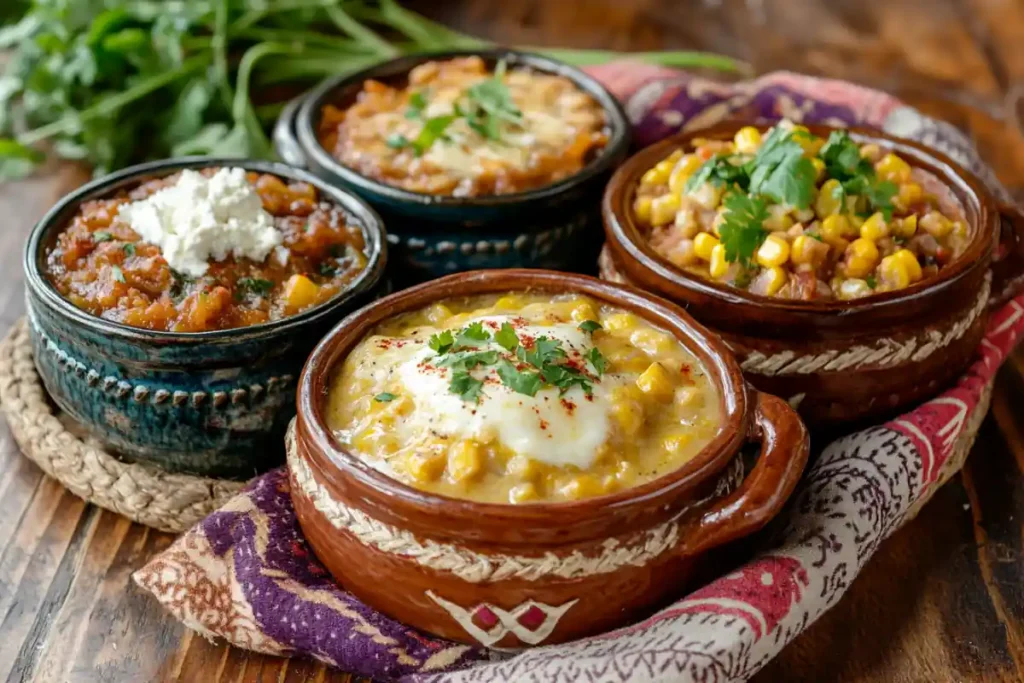When it comes to Mexican cuisine, few dishes embody the vibrant flavors of the culture quite like calabacitas. This delightful recipe combines fresh squash, vegetables, and spices to create a healthy and satisfying dish perfect for any meal. Whether you’re a fan of traditional Mexican flavors or looking to explore a new vegetable dish, this calabacitas recipe has you covered. In this article, we’ll dive deep into everything you need to know about making, serving, and even customizing this delicious recipe.
Understanding Calabacitas
What Are Calabacitas?
Calabacitas is a beloved Mexican dish, celebrated for its simplicity and nutritious ingredients. At its core, the word “calabacitas” translates to “little squash” in English, a nod to the primary ingredient: Mexican squash. This dish typically features zucchini or other summer squash sautéed with a medley of vegetables like corn, tomatoes, and onions. Often, it’s elevated with melted cheese or served as a vegan-friendly option.
But calabacitas isn’t just a meal—it’s a culinary tradition. Rooted in Mexican kitchens for generations, it serves as a reminder of the country’s rich agricultural heritage. Its versatility and adaptability make it a staple for family dinners, potlucks, and everything in between.
The Meaning of ‘Calabacitas’ in English
The term “calabacitas” directly translates to “little squashes” or “baby squash” in English. This highlights the dish’s key ingredient: young, tender squash varieties. These squash are prized for their mild flavor, which serves as the perfect canvas for bold spices and vibrant vegetables. Understanding the name gives you a glimpse into its charm—simple, unassuming, yet undeniably delicious.
The Mexican Squash: Varieties and Characteristics
Mexican squash, often confused with zucchini, includes a range of squash varieties that differ slightly in texture and flavor. From the light-green calabacita to the more familiar dark-green zucchini, each type brings its unique qualities to the table. Mexican squash is typically smaller and softer than zucchini, with a slightly nuttier flavor. Its tender flesh and thin skin mean it cooks quickly and absorbs flavors beautifully, making it ideal for this recipe.
Nutritional Benefits of Calabacitas
When you choose calabacitas, you’re not just opting for a flavorful dish; you’re making a healthy choice too. Packed with vitamins A and C, fiber, and potassium, this recipe is a powerhouse of nutrition. Squash and zucchini are low in calories yet rich in antioxidants, supporting heart health and boosting your immune system. Pair them with other nutrient-dense ingredients like tomatoes and corn, and you’ve got a meal that’s as wholesome as it is delicious.
For example, corn provides a dose of complex carbohydrates, while tomatoes are an excellent source of lycopene. Adding cheese can enhance the protein content, or you can keep it vegan for a lighter option. Whichever way you prepare it, calabacitas is a dish that brings both flavor and health to the table.
Ingredients for Calabacitas Recipe
Essential Ingredients
To create the perfect calabacitas recipe, it’s all about fresh and flavorful ingredients. The beauty of this dish lies in its simplicity, so each component plays a vital role. Here’s a breakdown of what you’ll need:
- Mexican Squash or Zucchini: The star of the dish, offering a mild flavor and tender texture. Look for small, firm squash for the best results.
- Corn Kernels: Add a touch of sweetness and a delightful crunch, whether fresh, canned, or frozen.
- Tomatoes: Bring vibrant color and acidity to balance the richness of the squash.
- Onions and Garlic: Provide a savory base, enhancing the dish’s depth of flavor.
- Cheese (Optional): Queso fresco or Monterey Jack are popular choices, melting beautifully into the vegetables.
- Spices and Herbs: Cumin, oregano, and fresh cilantro elevate the dish with authentic Mexican flair.
- Olive Oil or Butter: Used for sautéing, adding richness to the recipe.
Choosing the Right Squash
When selecting squash for this recipe, consider the following tips to ensure you get the best quality:
- Opt for young, tender squash with smooth skin and no blemishes.
- Smaller squash tends to be sweeter and less watery, making it ideal for calabacitas.
- If Mexican squash isn’t available, zucchini or yellow squash are excellent substitutes.
By focusing on freshness, you’ll guarantee the star ingredient shines in every bite.
Additional Vegetables and Their Roles
While the classic calabacitas recipe uses squash, corn, tomatoes, and onions, you can get creative with your vegetable choices. Bell peppers, for instance, add a pop of color and a hint of sweetness, while poblano peppers bring a mild heat for spice lovers. If you’re aiming for more texture, toss in some mushrooms or diced carrots—they’ll complement the squash beautifully.
Cheese Options for Calabacitas
If you’re going the cheesy route, choosing the right cheese makes all the difference.
- Queso Fresco: A crumbly cheese that stays slightly firm even when heated, providing a mild, milky flavor.
- Monterey Jack or Cheddar: Both melt smoothly into the dish, creating a creamy, comforting texture.
- Cotija Cheese: Adds a salty, tangy kick when sprinkled on top after cooking.
For a vegan option, consider a dairy-free cheese alternative, or skip it entirely and let the vegetables take center stage.
Spices and Seasonings
The seasoning is where this dish truly comes alive. Calabacitas relies on a blend of classic spices to enhance its flavors.
- Cumin: Adds warmth and earthiness.
- Oregano: Lends a subtle herbal note.
- Salt and Pepper: Essential for seasoning every layer.
For an extra kick, sprinkle in a pinch of chili powder or crushed red pepper flakes, tailoring the spice level to your preference.
Step-by-Step Preparation

Preparing the Vegetables
Before you start cooking, taking the time to prep your vegetables properly can make all the difference. Here’s how:
- Wash Thoroughly: Rinse the squash, tomatoes, and any additional vegetables under cold water to remove dirt and residue.
- Chop Evenly: Dice the squash, tomatoes, and onions into uniform pieces. This ensures even cooking and a harmonious texture.
- Corn Preparation: If using fresh corn, carefully remove the kernels from the cob with a sharp knife. For canned or frozen corn, simply drain or thaw as needed.
- Mince Garlic: Crush and finely chop garlic for a fragrant, savory base.
With all your vegetables prepped, you’re ready to bring the dish together!
Cooking Instructions
Here’s the step-by-step process to make your calabacitas recipe:
- Heat the Pan: In a large skillet, heat 2 tablespoons of olive oil or butter over medium heat.
- Sauté Onions and Garlic: Add diced onions and garlic to the pan. Cook for 2–3 minutes until fragrant and translucent.
- Add the Squash: Stir in the chopped squash, allowing it to cook for 5–7 minutes until tender but not mushy.
- Incorporate Tomatoes and Corn: Toss in the diced tomatoes and corn kernels. Mix well and cook for another 5 minutes, letting the flavors meld.
- Season Generously: Sprinkle in cumin, oregano, salt, and pepper. Stir to coat the vegetables evenly.
- Optional Cheese Addition: If using cheese, lower the heat and sprinkle it over the dish. Cover the pan and let it melt for 2–3 minutes.
- Garnish and Serve: Top with freshly chopped cilantro and serve hot.
Achieving the Perfect Texture
Getting the texture right is key to a great calabacitas recipe. Here are some tips:
- Cook the squash until it’s just tender to maintain its slight crunch and prevent it from becoming soggy.
- Stir occasionally to avoid sticking but not so frequently that the vegetables break apart.
- If adding cheese, allow it to melt naturally for a creamy finish without overcooking the vegetables.
Serving Suggestions

The versatility of calabacitas makes it an ideal dish to pair with various accompaniments:
- Serve it as a side dish alongside grilled chicken, fish, or tacos.
- Use it as a main course by pairing it with warm tortillas for a light vegetarian meal.
- Add it as a topping for rice, beans, or even nachos for a unique twist.
Pairing calabacitas with fresh lime wedges and a sprinkle of Cotija cheese can take it to the next level.
Variations of Calabacitas

Calabacitas con Elote (With Corn)
One of the most beloved variations of the calabacitas recipe is calabacitas con elote, which highlights the natural sweetness of corn. Here’s how you can create this variation:
- Ingredients: Use the classic recipe but double the corn for a more prominent flavor.
- Preparation: Follow the original steps, ensuring the corn is added earlier in the cooking process so it absorbs the seasonings.
- Serving Tip: Garnish with queso fresco and a squeeze of lime to enhance the sweetness of the corn.
This version is especially popular in the summer when fresh corn is abundant, making it a seasonal favorite.
Calabacitas con Queso (With Cheese)
For those who enjoy a creamy, indulgent texture, calabacitas con queso is the way to go. Adding cheese transforms the dish into a hearty comfort food:
- Cheese Choices: Opt for melty cheeses like Monterey Jack or cheddar for a creamy finish, or use queso fresco for a crumbly, slightly tangy addition.
- Cooking Tip: Add the cheese during the last few minutes of cooking, covering the pan to allow it to melt evenly.
- Serving Suggestion: Serve with warm tortillas for a simple yet satisfying meal.
This version balances the earthy flavors of the squash with the richness of melted cheese.
Calabacitas a la Mexicana
If you love bold, spicy flavors, calabacitas a la Mexicana is the perfect choice. This variation includes tomatoes, onions, and green chili peppers for a colorful, flavorful dish reminiscent of Mexican flag colors.
- Ingredients: Add diced green chilies or jalapeños for heat and use Roma tomatoes for their rich flavor.
- Preparation: Sauté the onions, tomatoes, and chilies first to create a flavorful base before adding the squash.
- Customizations: Adjust the spice level by including more or fewer chilies, catering to your taste.
This version is ideal for those who enjoy a bit of heat in their meals.
Vegan and Vegetarian Adaptations
Calabacitas is naturally vegetarian and can easily be adapted for vegan diets. Here’s how:
- Omit the Cheese: Replace traditional cheese with a plant-based alternative or skip it entirely for a lighter dish.
- Add Protein: Include chickpeas, black beans, or tofu to make it more filling without compromising on flavor.
- Enhance the Seasoning: Use smoked paprika or nutritional yeast to add depth and umami in place of cheese.
This vegan-friendly version is proof that healthy eating can still be packed with flavor.
Frequently Asked Questions
Are Calabacitas Good for You?
Absolutely! Calabacitas is a nutrient-rich dish that’s not only delicious but also incredibly healthy. Squash, the primary ingredient, is low in calories and high in vitamins like A and C. The dish also features fiber-packed vegetables like corn and tomatoes, which support digestion and overall well-being. Depending on the version you prepare, calabacitas can be low in fat and cholesterol, making it a fantastic choice for those seeking a balanced diet.
What Does ‘Calabacitas’ Mean in English?
The term “calabacitas” translates to “little squash” in English, referencing the tender, young squash that serves as the cornerstone of this recipe. In the culinary context, it’s also used to describe the popular Mexican vegetable dish that features a medley of sautéed squash, corn, tomatoes, and seasonings.
What Is the Name of Mexican Squash?
Mexican squash is commonly referred to as calabacita. This type of squash resembles zucchini but is typically smaller, lighter in color, and slightly nuttier in taste. It’s a staple in Mexican cooking, often used in dishes like calabacitas or added to soups and stews.
What’s the Difference Between Zucchini and Calabacita?
While zucchini and calabacita are similar, they’re not identical. Calabacita, also known as Mexican squash, is generally smaller and rounder with a pale green skin. Zucchini, on the other hand, is typically darker green and slightly more elongated. In terms of flavor, calabacita has a slightly nuttier and sweeter taste compared to the milder zucchini. Both can be used interchangeably in recipes, including calabacitas, depending on availability.
Embracing the Tradition of Calabacitas
Calabacitas is more than just a dish—it’s a celebration of Mexican culture, heritage, and agricultural abundance. This humble recipe, rooted in family traditions and simple ingredients, has stood the test of time, proving that good food doesn’t have to be complicated. Its adaptability makes it a dish that transcends boundaries, appealing to everyone from health-conscious eaters to those seeking comfort food.
Whether you’re making calabacitas con elote, indulging in the creamy goodness of calabacitas con queso, or exploring vegan-friendly adaptations, the possibilities are endless. It’s a dish that invites creativity while honoring its traditional roots.
By preparing and sharing calabacitas with family and friends, you’re not only enjoying a healthy and flavorful meal but also participating in a cherished culinary tradition. So, why not make it a part of your next dinner? With its vibrant colors, enticing aroma, and delicious taste, calabacitas will undoubtedly become a favorite in your kitchen.
Print
Calabacitas (Mexican Squash Stir-Fry)
- Total Time: 25 minutes
- Yield: 4 servings 1x
Description
Calabacitas is a comforting and flavorful Mexican dish featuring tender squash, sweet corn, and vibrant tomatoes, all sautéed with onions, garlic, and a hint of spice. It’s a versatile, wholesome recipe that’s perfect as a side dish or a vegetarian main course. Packed with fresh vegetables, it’s both nutritious and easy to make.
Ingredients
- Vegetables:
- 2 medium zucchini or Mexican squash (calabacitas), diced
- 1 yellow squash, diced
- 1 cup fresh or frozen corn kernels
- 1 cup diced tomatoes (fresh or canned)
- 1 medium onion, finely chopped
- 1 small bell pepper (green, red, or yellow), diced
- Seasoning:
- 2 cloves garlic, minced
- 1 jalapeño or serrano pepper, finely chopped (optional, for spice)
- 1 teaspoon ground cumin
- 1/2 teaspoon chili powder (optional)
- Salt and pepper, to taste
- Garnish & Finishing:
- 1/4 cup fresh cilantro, chopped
- 1/2 cup crumbled queso fresco or shredded cheese (optional)
- Lime wedges for serving
- Oil:
- 1–2 tablespoons olive oil or vegetable oil
Instructions
- Prepare the Vegetables:
Wash and dice the squash, onion, tomatoes, and bell pepper. If using fresh corn, cut the kernels off the cob. - Heat the Oil:
In a large skillet, heat the oil over medium heat until shimmering. - Sauté Aromatics:
Add the onion and garlic to the skillet. Cook for 2-3 minutes until fragrant and translucent. If using jalapeño, stir it in now. - Cook the Vegetables:
Add the diced squash, bell pepper, and corn to the skillet. Stir well to coat in the oil and cook for 5-7 minutes until the vegetables start to soften. - Add Tomatoes and Seasoning:
Stir in the diced tomatoes, cumin, chili powder (if using), salt, and pepper. Let the mixture simmer for 5-7 minutes until the squash is tender and the flavors meld together. - Garnish and Serve:
Remove the skillet from heat. Sprinkle with fresh cilantro and optional queso fresco or shredded cheese. Serve warm with lime wedges on the side.
Notes
- Variations: You can add cooked black beans for extra protein or a dash of smoked paprika for a deeper flavor.
- Serving Ideas: Serve with warm tortillas, as a taco filling, or alongside rice for a complete meal.
- Storage: Store leftovers in an airtight container in the refrigerator for up to 3 days. Reheat gently on the stovetop.
- Prep Time: 10 minutes
- Cook Time: 15 minutes
- Category: Side Dish, Main Dish
- Method: Sautéing
- Cuisine: Mexican
Nutrition
- Calories: 120
- Sugar: 6g
- Sodium: 220mg
- Fat: 5g
- Saturated Fat: 1g
- Unsaturated Fat: 4g
- Trans Fat: 0g
- Carbohydrates: 16g
- Fiber: 4g
- Protein: 4g
- Cholesterol: 5mg
Keywords: Calabacitas, Mexican Squash, Vegetarian, Easy Recipe, Healthy

